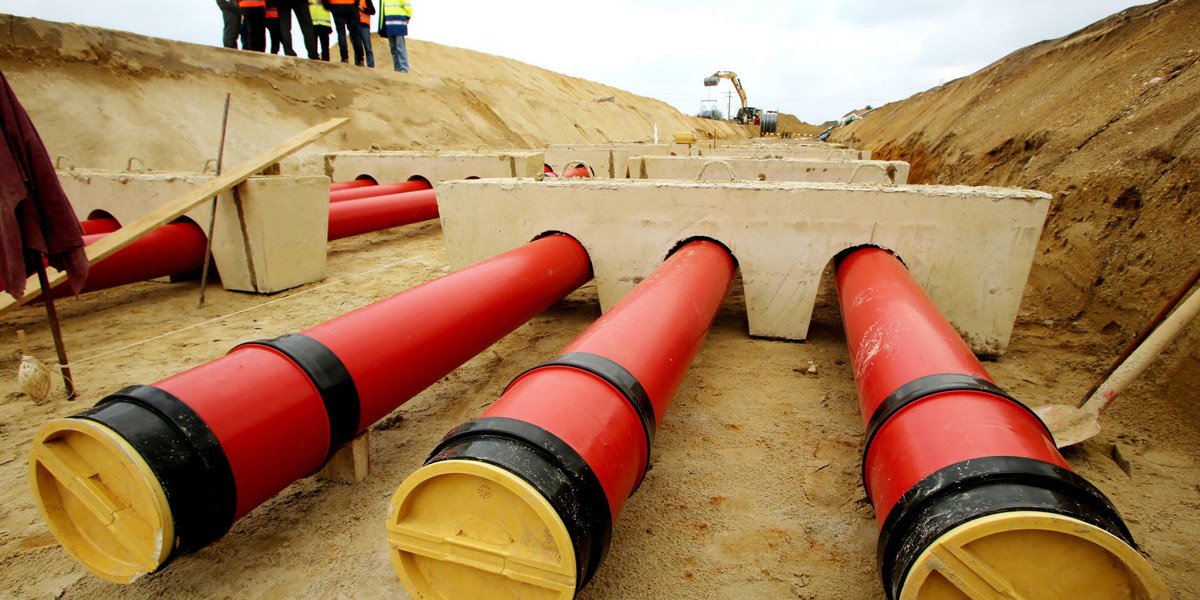Underground DC to transmit wind-generated power across Germany
German cabinet opts for underground power cabling
Thick underground cables to transmit wind-generated power across Germany have been endorsed by federal cabinet. The plans fit with Chancellor Angela Merkel’s push for renewables ahead of the Paris UN climate summit.
The German cabinet on Wednesday endorsed draft law that would give preference to high-voltage underground cabling instead of stringing cables above ground on “monster” pylons up to 75 meters (246 feet) high.
Germany’s post-Fukushima decision in 2011 to quit nuclear power by 2022 still hinges on how to transmit prolific wind as well as solar-generated power from northern Germany to southern industrial regions such as Stuttgart and Munich.
Segments of transmission cables are already under construction or have already been enlarged. A quarter of Germany’s electricity currently comes from wind, solar and biogas sources.
Resistance from residents
Wednesday’s decision by ministers to opt for the main north-south trunk of 1,000 kilometer s (620 miles) of thick direct-current cable follows bitter resistance to overhead cabling led by Bavarian Premier Horst Seehofer.
Cabinet sources quoted by Reuters said the extra costs of going underground were justified because of costly legal resistance put up by citizens’ groups. They have cited losses in scenic values and perceived health risks associated with above-ground cables.
Economy Minister Sigmar Gabriel, whose ministry had put the extra cost at between 3 billion and 8 billion euros ($3.3 billion and $9 billion), was criticized by the opposition Greens of giving in to Seehofer, another prominent figure in Merkel’s three-party coalition.
Gabriel, who also leads Germany’s Social Democratic Party (SPD) had argued that underground cabling would in many locations attract “more acceptance” compared to overhead arterial power lines.
In July, coalition leaders dropped a levy on coal-fired power stations under pressure from utility companies, prompting severe criticism from environmentalists.
Part of ‘decarbonization’ drive
In total, some 2,800 kilometers of cables are to be laid by 2024 to carry power from renewable sources instead of nuclear power plants.
At the Group of Seven (G7) summit in June in Elmau, Bavaria, Merkel called for the global economy to be “decarbonized.” Leaders agreed to press for a major reduction in fossil fuel consumption by 2050.
France hosts a major UN conference on how to slow global warming in December.

Join Now
Get Involved
The only way to make a difference is to get involved. It’s easy to sit back and wait for others to do something but when you are staring at 75-85m towers in a few years time, you will kicking yourself for not doing something when you had the chance. This is OUR only chance to stop these towers, so get involved now.
Welcome to the home of Darley Power Fight. A group of residents in Darley, Coimadai and Merrimu, united against high voltage transmission towers passing through our backyard. We came together through the realisation the transmission line will divide a narrow corridor between Darley and the Lerderderg State Park; altering landscape character, causing widespread damage to critical habitat for threatened species, increasing fire risk to the Park and thousands of residents, destroy our visual amenity, harm local agriculture and will impact businesses and property values. It will completely desecrate, in a few years, what nature has taken millions of years to create.


